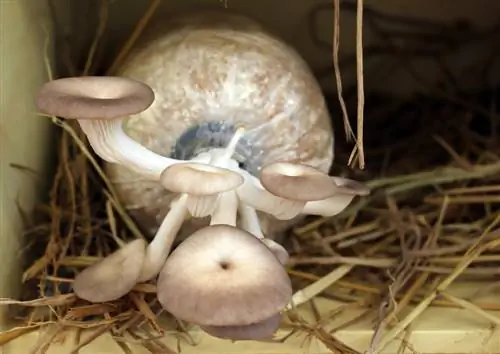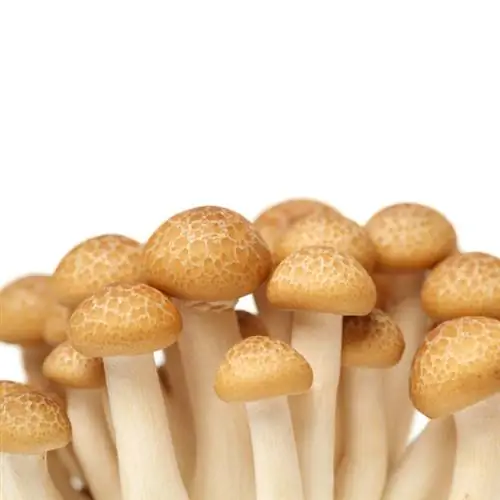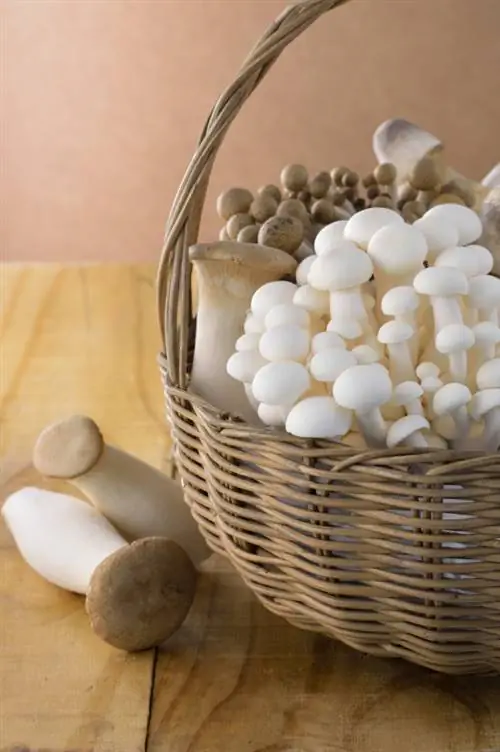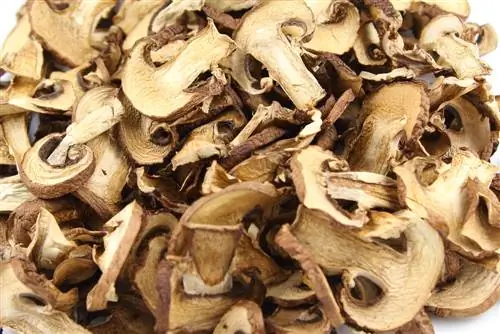- Author admin [email protected].
- Public 2023-12-16 16:46.
- Last modified 2025-01-23 11:21.
In addition to the edible mushrooms collected in nature, cultivated mushrooms are becoming increasingly popular. Probably the best known is the cultivated mushroom, which was first mentioned in France around 1650 and is now grown in large cultures around the world. The range of cultivated mushrooms has expanded dramatically in recent years, so that around 20 different species can now be grown.
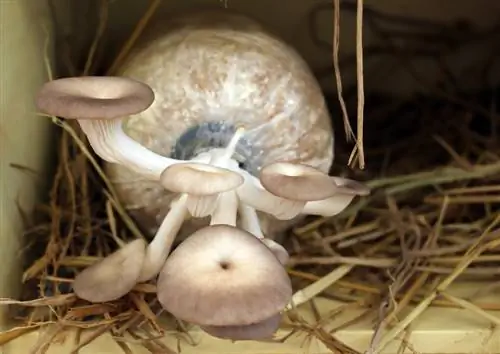
How can you grow edible mushrooms yourself?
In order for edible mushrooms to be grown successfully, they need a suitable substrate. Popular and easy-to-grow mushroom species such as cultivated mushrooms, oyster mushrooms or shiitake can be cultivated on straw or various types of wood such as oak or red beech. Ready-made cultures or mushroom spawns make cultivation easier.
The ancient Romans already cultivated mushrooms
The ancient Romans and Greeks already tried their hand at mushroom cultivation. A simple method often led to the goal: ripe fungal fruiting bodies were placed on clean cut surfaces of a suitable type of wood to be sporulated and then left to their own devices. The first commercial mushroom cultures emerged in France at the beginning of the 20th century. Today it is hard to imagine the menu without this mushroom. Stock mushrooms and oyster mushrooms have also been specifically bred for around 100 years. Garden centers and seed shops now offer various types of mushrooms in ready-made cultures or mushroom spawns.
What mushrooms can be grown today?
However, only so-called saprobiont mushroom species can be grown. These are species that feed on decaying substances - for example rotting wood. However, the cultivation of particularly popular edible mushrooms such as porcini mushrooms, chanterelles and morels has so far been attempted in vain. These species can only live in close communities with certain plants (mycorrhiza) and produce fruiting bodies. Mainly the following mushrooms can be grown today:
| Mushroom type | Latin name | Available cultures | Suitable substrate / types of wood |
|---|---|---|---|
| cultivated mushroom | Agaricus bisporus | Ready culture / breeding box | Straw |
| Shii Take | Lentinula edodes | Finished culture, grain spawn, inoculation plugs | Oak, European beech, hornbeam, birch, alder, cherry |
| Oyster Mushroom | Pleurotus ostreatus | Finished culture, grain spawn, inoculation plugs | Common beech, birch, ash, alder, poplar, willow, fruit trees |
| Lime mushroom | Pleurotus cornucopiae | Finished culture, grain spawn, inoculation plugs | Common beech, ash, alder, poplar, willow, maple |
| Herb mushroom | Pleurotus eryngii | Ready culture and grain spawn | Straw |
| Brown Cap | Stropharia rugosoannulata | Ready culture and grain spawn | Straw |
| Mu-Err (Judas Ear) | Auricularia auricula-judae | Ready culture and grain spawn | elderwood |
| Pom Pom | Hericium erinaceum | Finished culture, grain spawn, inoculation plugs | Oak, red beech, walnut, apple tree |
| Schopf-Tintling | Coprinus comatus | Ready culture and grain spawn | Straw |
Create your own mushroom cultures
Mushroom spawns are approximately one liter, approximately 500 gram units of sterile culture medium (usually made of straw) that are completely covered in white fungal mycelium. Wooden inoculation dowels, which are also covered in the respective mycelium, are also offered. Since these mushroom spawns are quickly attacked by mold when it is warm, they should be spread out as quickly as possible and not stored.
Tip
Ready-made culture sets, in which the substrate is included, enable a particularly quick harvest.

